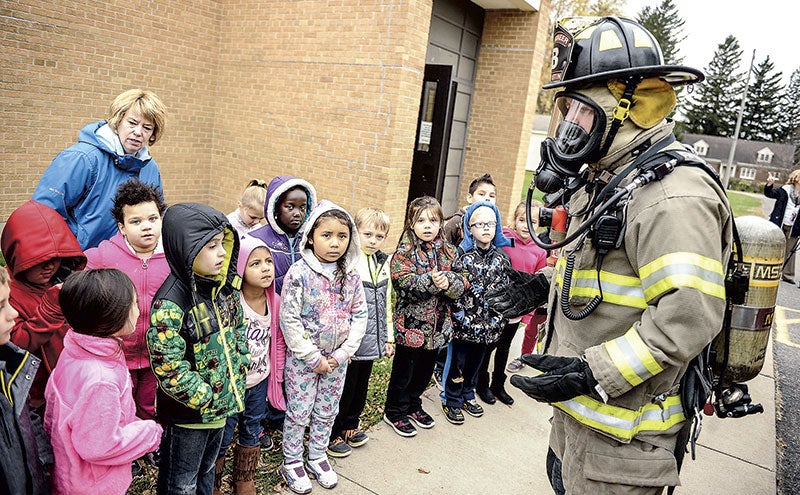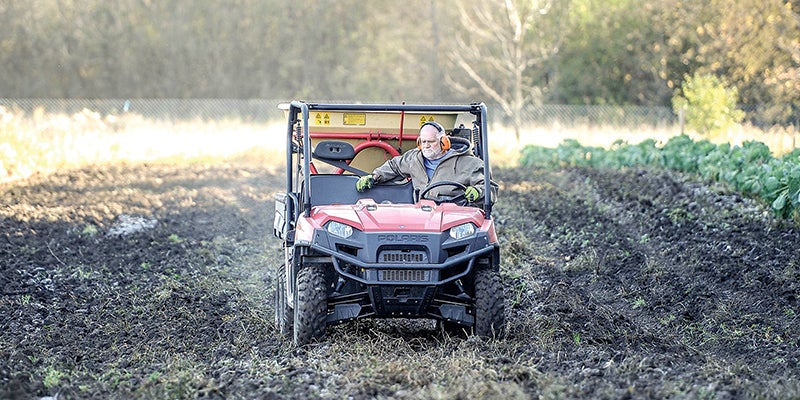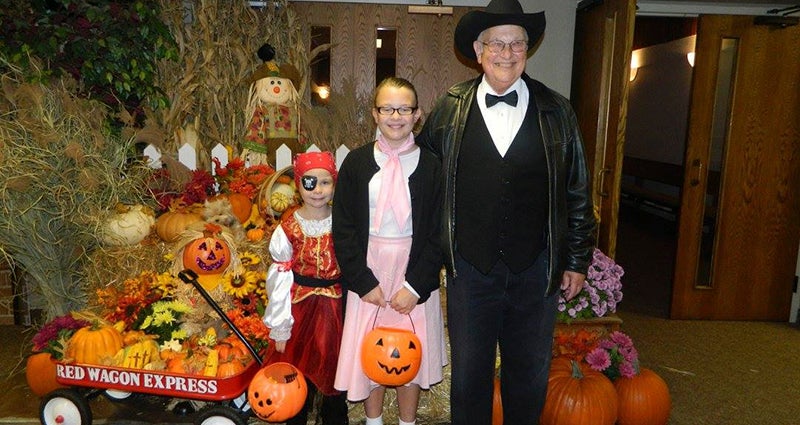Minnesota Air Guard: From war to home in four days
Published 10:51 am Monday, May 28, 2012
By Mark Brunswick
Star Tribune, Minneapolis (McClatchy-Tribune News Service)
May 27 — AN AIR BASE IN THE PERSIAN GULF
With temperatures already hitting 95 degrees, the military C-130 cargo plane, the word “Minnesota” scripted on its tail in maroon and gold, takes off from the desert runway precisely at 10 on a Sunday morning. Its call sign seems appropriate for the mission: REACH897.
Inside, 33 members of the Minnesota Air National Guard carve out space for themselves in the cavernous plane for the long journey home after their latest deployment.
They settle into hanging canvas chairs and don headphones to keep the thump thump thump of the four turbo-prop engines from damaging their ears. The trip is a unique ritual in the military: a four-day endurance test at 300 mph inside what amounts to a flying semi-truck.
While most troops arrive home on commercial or charter flights within days of leaving combat, these crews return home in the equipment they flew in battle. It is an exercise in anticipation — the equivalent of combining Christmas Eve, the last day of school, and the day before you get out of prison.
“It’s kind of like a decompression over a few days,” said Master Sgt. Robben Todd. “You get to unwind a little bit, shed that active-duty military mindset.”
It is also the end of an era, a snapshot of a nation on the long road home from war. The crew is the last from the Air Force National Guard to have the primary responsibility of flying its cargo missions out of Bagram Air Base in Afghanistan. Active-duty Air Force took the lead after they left.
In 10 years of war, many have served more than half a dozen deployments to Iraq and Afghanistan and have seen the world change from 20,000 feet. Unlike their counterparts in the Army, where deployments can last a year, Air Guard deployments are usually 60 to 120 days. But they are more frequent. In the last 10 years, airmen are often deployed every 12 to 15 months.
Technical Sgt. Brian Bittmann has been engaged for two of his last deployments and hopes that when he marries next year his bride will continue to be understanding about his absences. Master Sgt. Richard Krivanek’s daughter turned 16 when he was away, a milestone he will always regret missing.
The odyssey home will take them from the intensity of the combat of Bagram; to an air base on the Persian Gulf, with its inhospitable landscape and relations with the host country sensitive enough that the U.S. military doesn’t publicly divulge its name. They’ll refuel at a U.S. naval base in Crete, where they are warned of rising anti-American sentiment; through Scotland, which offers the first glimpse of green in two months, through St. John’s, Newfoundland, and then home to the 133rd Airlift Wing of the Minnesota Air National Guard.
It is a journey for the crew to come together one last time, before they go their separate ways. “Deployments are not where you’re at, they’re who you’re with,” said veteran flight engineer Lanny White.
—-
The first of the homeward-bound crew arrive at the air base from Afghanistan shortly after 9 p.m. on a Thursday night. They land with wind advisories of 45 knots, the dust in the darkness stinging their faces as they disembark the plane and move quickly to debriefings after a nine-hour flight.
Air Force Lt. Col. Dan Gabrielli, a Minnesotan from White Bear Lake who is serving 135 days as the deputy operations commander, abandons protocol and greets the loadmaster as if she were an aunt. The hug, unusual in the hierarchical military, is for Senior Master Sgt. Deb Arnes, one of the first two female loadmasters in the Minnesota squadron. The job throwing big bags from big planes is usually reserved for big men, but when Arnes, rail thin but ropy, was promoted to the position in 1995, several older airmen retired out of outrage. About five years ago, one of the men approached her and apologized.
“Good to see you,” Arnes tells Gabrielli. “But we’re just passing through.” She separates pallets of bags for those staying at the base and those “transienting” home, a group that included her.
Once a hub of operations during the Iraq war, the base is constricting under the new realities of a post Iraq and Afghanistan world. Duties for a new Minnesota crew will have them flying missions into Afghanistan, into parts of Iraq to support State Department operations — not combat — and to nearby countries like Djibouti, where they will drop off supplies and non-military personnel as part of ongoing State Department operations. Guard units will take on more of the role of supporting countries in the region, rather than as occupiers.
“Ultimately we are here at the behest of the all the countries with the GCC that want us here,” said Col. Michael Zick, commander of the 386th Air Expeditionary Wing, referring to the Gulf Cooperation Council, six Persian Gulf nations that work together for security. “We’re supporting them in their efort.”
A new crew, just arrived from Minnesota, will remain on base for their 60-day tour. The schedule allows for a three-day overlap of the two crews, a time for briefing new members on what lies ahead, as well as detailing the intricacies of flying in Afghanistan, with its high temperatures and high altitudes. The exchange is part of “airmanship”: knowing the difference between the by-the-book ways of the Air Force and the reality of getting things done.
“Stay ahead of the airplane. You’re really going to need it there,” veteran flight engineer Lanny White tells veteran flier but first-time flight engineer Travis Green. Green nods intensely. “You’ll get that warm, fuzzy right here. If it don’t feel good, don’t do it.”
—-
Six hours after leaving the desert heat, the door opens in Crete with its temperate Mediterranean breeze. Greece prefers not to have American military walking around in uniform, so the crew changes into civilian clothes they haven’t worn for two months.
“This is kind of bittersweet,” says Chief Master Sgt. Dave Coldren shedding his uniform. This would likely be his last deployment after a 30-plus-year career that included missions to Panama and Somalia. “There’s a lot of memories, a lot of work that most people don’t even know we did.”
They board a bus for a hotel on the other side of the island. Before leaving base, it slowed to a stop. Two guys had made a pit stop to the commissary and returned to pass out cans of cold Bud Light.
Over the crack of beer cans, Lt. Col. Carl Lojovich, the director of operations for the mission, went over the group’s accomplishments: They completed 360 missions, hauling an estimated 34,000 passengers and 9,000 tons of cargo. There was a nighttime air drop of ammunition and fuel for an American unit caught in a firefight away from its base. The navigator heard gunfire crackling over the radio as they made the drop. There were Engine Running Off-loads, or EROs, on short runways with deadly drop-offs in which engines never stop as supplies are quickly off-loaded in 90-degree temperatures made worse by 900-degree backwash of the churning turboprops. “I won’t say it was fun, but I think you can say we kicked ass,” Lojovich tells them. “So let’s end on a high note. I don’t want to have to come down and pick any of you guys up.”
The crew returns unbroken to the bus the next morning for the six-hour, 45-minute flight to Scotland.
—-
The interior of a C-130 Hercules is a collection of straps, ratchets and rollers. The engines produce a vibration that reaches deep into your chest, like a truck on cobblestones.
Conversation is impossible. By the time Crete is a distant speck, crew members have retreated into their own worlds of iPods and Kindles. Some stretch out on benches of plastic webbing. Some fashion hammocks over the pallets and sleep to the swinging of the airplane. They call the back of the plane the Herc Hilton.
Temperature is controlled by a huge blower from above and there are no windows to speak of.
Virtually unnoticed except on the flight deck, the stranded Italian cruise ship Costa Concordia, the Eiffel Tower, and the White Cliffs of Dover go by 20,000 feet below.
Yet crews remain defensive of the C-130s. Faster and larger planes are now in the fleet but these versions, which have been in the air since the 1990s, have proved more flexible for modern military operations. The C-130s fly low energy, low-to-the-ground missions without margin for error. They are not gear up, flaps up, bunk up, like some other more sophisticated aircraft, pilots say.
“The C-130 is a plane that has to be flown,” said Major Marcus West, a pilot who also used to fly Army helicopters. “We fly onto short fields. On dirt runways. It gets it done. The jet fighters are way up in the air. We’re down low where it all happens.”
Chief Master Sgt. Jim Ricci settles on a pallet, thumbing through a Popular Mechanics magazine. After 33 years in the Air Guard, this will be his last deployment. He can talk of the surreal memory of the green-tinged landscape of the Iraqi desert through night-vision goggles, making it feel like the bottom of the ocean. But he also remembers returning with burdens that ruined his first marriage.
“I would come back with my hair on fire,” he said. “I’d show up on the doorstep and start telling everybody what to do. It finally dawned on me that they were asking me when I was going away again. I would come back with a sense of accomplishment and I was just not willing to listen to anyone else.”
Ricci, a loadmaster, was reflective on his last trip home. “I went through my career wanting to make a difference and now I’m ending my career not knowing if I made a difference. I’m finding myself telling me it’s OK if I didn’t,” he said.
Robben Todd is not yet in full decompression mode, sharing videos of drops his crew has made. Todd, whose brother, wife, and sister-in-law are also in the Air Guard, was aboard a Minnesota Guard plane on a bright September morning in 2001 on a routine delivery at Andrews Air Force Base when a streaking passenger liner blew by them in mid-air. His crew watched as it struck the Pentagon. They were told to monitor another plane heading west, the last hijacked plane. They watched as a plume of smoke rose from the Pennsylvania countryside.
The eight Minnesotans are believed to be the only eyewitnesses to two hijacked crashes that day.
“I’m still angry about it, actually,” Todd says of that day. “They killed about 350 of my colleagues and caused great damage to our nation. Basically, it was the start of a couple of wars.”
—-
The 7 1/2-hour flight from Scotland to Newfoundland is the longest leg of the journey. His role in the cockpit over for the trip, Master Sgt. Lanny White has secured a small television under the medical litters and is playing video golf with flight surgeon Major Lucas “Doc” Hammell. Hammell is Tiger Woods and White, the old-schooler, plays as Arnold Palmer, their groans over missed putts drowned out by the props.
White, intense but gregarious, ran 28 missions in 60 days. His last mission included transporting three soldiers in body bags, American flags draped over them. It reinforced a rule White developed several years ago: He won’t leave the flight deck if there are casualties in the back of the plane.
From his vantage point in the air, he has seen changes in Afghanistan. There is more electricity in villages, evidence of success. Mortar attacks on the base are fewer and less precise. On Fridays, a stadium in Kabul once featured beheadings of religious offenders. Now, White says, kids kick soccer balls in the stadium.
“You can still see a lot from the air,” he says.
He admits that multiple deployments to Iraq and Afghanistan over the last 10 years have taken a toll. He’s learned to develop a routine when he comes home: no alcohol for at least two weeks, plan several projects to keep busy. He’ll be clearing some land he and his brother own near Randall, traveling up to Lake of the Woods to be with a friend who just bought a new fishing boat, refinancing his house.
On Canadian soil, some set out for the now-traditional 4-mile run up St. John’s Signal Hill. Others opt for a more sedentary tradition: a game of euchre.
During their last night together, many end up at bar, where Marcus West, crew-cutted and with the confident swagger of a quarterback, grabs a guitar and leads them all in a rendition of “American Pie.” They know all the words.
—-
The next morning, a sense of finality and relief emerges after takeoff. Today they’ll be home.
This was the first overseas deployment for Technical Sgt. Corey Place, now a loadmaster after spending the first part of his military career as a ground refueler.
He kept his watch on Minnesota time while in Afghanistan and stayed in touch with folks back home through Skype or e-mail or Facebook. He had several American flags flown over the base and has had them framed and dedicated to relatives who fought before him.
“All you think about when you’re not doing your mission is … coming home or what your family or friends are doing,” he says. “You could guesstimate that Dad’s getting ready for work. It gives you that sense of closeness, knowing what’s going on back home.”
Now, the anticipation on this slow journey home has seemed to make time go slower.
“If I had it my way we could be home in a couple of hours,” he says. “But its fun to see all these faces and reflect with your guys. To get to know them as people on the road instead of co-workers doing a mission in a war zone.”
As the plane nears home, Place stares out the window with what seems a sense of urgency, hoping to recognize familiar landmarks below him.
About an hour away from Minneapolis, Captain Brian Lind, who is completing his second deployment to Afghanistan, begins thumbing through a brochure from SkyWest Airlines. He delayed training for the regional airline because of the deployment. He had been making ends meet working with the Guard and substitute teaching in St. Paul schools. It’s his hope to train to fly full-time now.
By early June, Robben Todd will return to his job with the Minneapolis Fire Department. Marcus West soon will be back flying international flights with FedEx. Jim Ricci will have begun work on a full-size stagecoach he is planning to build for his kids.
After 7,000 miles, nine time zones, and four days, REACH897 officially ends on the runway in Minneapolis. Family members rush to the back of the plane after the engines are cut. Inside the plane, there are no cheers, no handshakes. Just the gathering of belongings as this group so tied together for the last two months prepares to go their separate ways.
The side door of the plane opens. It is 2:43 p.m. It is 68 degrees. For this crew, this part of their war is over.




